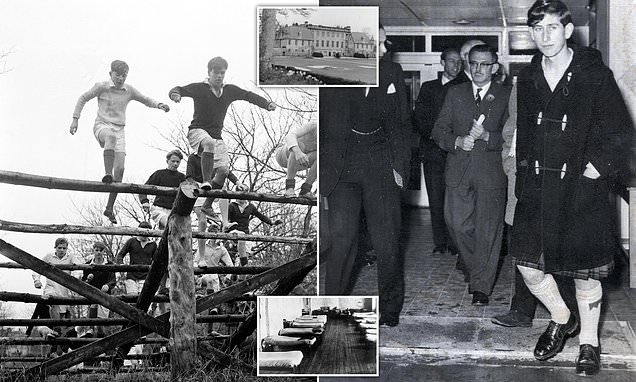Prince Charles, now King Charles III, faced significant challenges during his formative years at Gordonstoun, a boarding school in Scotland.
Enrolled at the age of 13, his experiences there were far from idyllic.
Reports suggest that his time at the school was marked by harsh treatment and bullying, making it a difficult chapter in his life.
Gordonstoun is known for its rigorous academic and physical demands, a legacy passed down from its founder, Kurt Hahn.
However, for the young prince, the environment proved particularly tough.
Accounts indicate that he was not only subjected to teasing but also faced physical abuse from other students.
This included incidents where he was beaten and had his ear pulled, highlighting the intense pressure he endured.
A recent ITV documentary titled “Charles, Our New King” sheds light on these troubling experiences.
Former student John Stenborough revealed that when Charles arrived at Gordonstoun, the school tightened its rules, making it even more challenging for him.
Stenborough recalled witnessing a brutal incident during a rugby match where Charles was attacked by fellow students.
Such moments of aggression were not just isolated events; they reflected the broader struggles he faced as the future king.
The bullying stemmed partly from the perception that Charles was different.
As the heir to the throne, he had privileges that other boys did not, including personal security.
This distinction made it harder for him to form friendships, as peers were wary of the social repercussions of associating with him.
Stenborough noted that many found it difficult to befriend Charles due to the teasing they would receive in return.
Despite these hardships, Charles displayed remarkable resilience.
He never openly complained about his treatment, choosing instead to endure the challenges.
His stoicism in the face of adversity seemed to forge a stronger character, instilling a sense of determination that would serve him well in later life.
Interestingly, after Charles completed his education at Gordonstoun, his younger brothers, Prince Andrew and Prince Edward, also attended the same institution.
However, their experiences reportedly differed significantly from Charles’s, with Andrew, in particular, enjoying a more favorable time at the school.
In a speech delivered in the House of Lords during the mid-1970s, Charles defended his time at Gordonstoun, expressing gratitude for the lessons learned.
He acknowledged the school’s demanding nature, stating that it challenged him both mentally and physically.
Rather than viewing his experiences as purely negative, he emphasized the personal growth and resilience he gained during those years.
Charles described Gordonstoun as a place that taught him about himself and his capabilities.
He reflected on how the school encouraged him to embrace challenges and take initiative, qualities that have undoubtedly influenced his approach to leadership as king.
Recently, in a gesture honoring their late mother, Princess Anne unveiled a plaque at Gordonstoun to commemorate a room named after Queen Elizabeth II.
This act not only pays tribute to their mother but also highlights the enduring connection the royal family has with the school.
As King Charles continues to navigate his reign, the challenges he faced in his youth serve as a reminder of the complexities behind the public facade of royalty.
His journey from a bullied schoolboy to the monarch of England is a testament to his strength and perseverance.
These early experiences shaped the man he has become, reflecting a blend of vulnerability and resilience that defines his character today.
Related Stories

